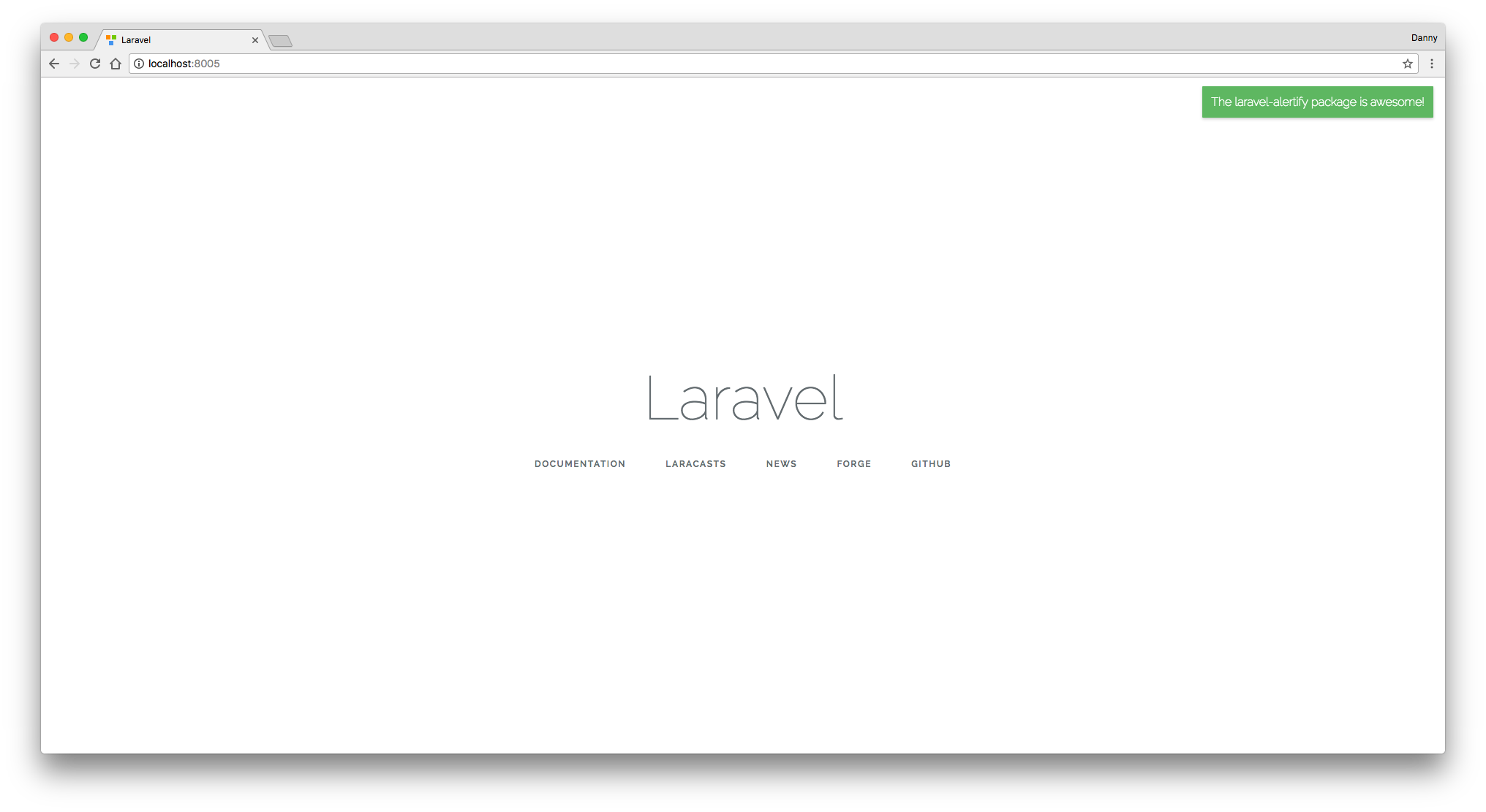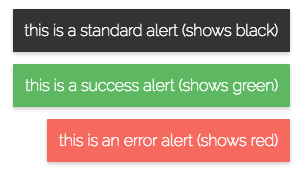odannyc / laravel-alertify
An alertify package for Laravel
Installs: 6 134
Dependents: 0
Suggesters: 0
Security: 0
Stars: 7
Watchers: 2
Forks: 3
Open Issues: 4
pkg:composer/odannyc/laravel-alertify
Requires
- illuminate/session: ^5.4
- illuminate/support: ^5.4
This package is auto-updated.
Last update: 2025-12-14 12:06:36 UTC
README
An alerts library for Laravel using alertify
alertify()->success("The laravel-alertify package is awesome!");
Installation
This package uses composer, so require it like so:
composer require odannyc/laravel-alertify
You'll also need to pull in the alertify.js project. This is located here: https://alertifyjs.org/
You can use NPM:
npm install --save alertify.js
Or include the CDN version of it in your app.blade.php template. (File may vary on your Laravel installation):
<script src="https://cdn.rawgit.com/alertifyjs/alertify.js/v1.0.10/dist/js/alertify.js"></script>
Include the service provider in config/app.php:
'providers' => [ odannyc\Alertify\AlertifyServiceProvider::class, ];
Also, include the Alias in config/app.php
'aliases' => [ 'Alertify' => odannyc\Alertify\Alertify::class, ];
Then, in the template of your Laravel installation, include the view anywhere in the body of your HTML:
@include('alertify::alertify')
Usage
Make sure you include alertify.js prior to using this package. (See installation instructions above)
You can call the alertify() helper function before returning/redirecting to a view:
/** * Update the specified resource in storage. * * @param \Illuminate\Http\Request $request * @return \Illuminate\Http\Response */ public function update(Request $request) { alertify()->success('Updated record successfully'); // You can also add multiple alerts! alertify('You are awesome!'); return redirect()->back(); }
You can either use the alertify() helper or use the static Facade:
Alertify::standard('I like alerts')
There are 3 types of alerts:
alertify('this is a standard alert (shows black)'); alertify()->success('this is a success alert (shows green)'); alertify()->error('this is an error alert (shows red)');
You can also show multiple alerts by calling that function multiple times:
alertify('alert 1'); alertify('alert 2');
You can save the alert and edit it based on logic:
$alert = alertify('i am an alert'); if ($error) { $alert->error(); } else { $alert->success(); }
There's many options you can add per alert:
// Show the alert for 5000 milliseconds and then dismisses itself (default: 4000) alertify('delayed 5 seconds')->delay(5000); // Alert stays displayed with no timeout alertify('i stay displayed on the screen')->persistent(); // Alert can be clicked to be dismissed alertify('i can be clicked to be dismissed')->clickToClose(); // You can position alerts (default: 'top right') alertify('i am on the bottom left')->position('bottom left'); // You can attach the alert to some other HTML element (default: 'document.body') alertify('i am displayed on a different parent')->attach('.some-html-accessor')
You can also daisy chain options:
alertify()->success('i am daisychained')->delay(10000)->clickToClose()->position('bottom right');


